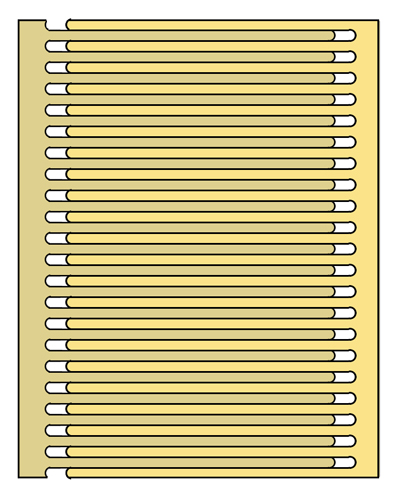I know the simple answer is to cut the slats separately and making an assembly, I've done that before. This time I want to cut it from a single piece of 3/4 plywood. It will be approx. 3.5ft x 4ft when collapsed and approx. 6ft x 4ft extended with fingers/grooves about 1" in width... I want the slats skinny as it will also serve as a table.
I don't think a jig saw is the right tool; certainly not freehand.
I've considered making one side (forstner bits/table saw) and using that as a router template... but that seems like it would have to be very exact and a lot of wood waste.
I've also considered buying/using a dado blade set, but getting the step/spacing right seems problematic to me.
Or possibly contracting it out to have laser cut... not sure if that would be cost effective, or even possible at that thickness.
Anyone experienced with cutting something like this?
EDIT:
I think I have a good idea of how to do this with a plunge router and 1" bit.
I'll cut the first slot using a fence attachment. And then I'll mount a 1" hardwood follower to the base... (I'm ok with drilling a couple holes in it).
Because the follower is effectively only a half fence I'll probably need to do a plunge entry for subsequent slots, and then rotate/switch directions for the exit. I could probably use the completed half as a template, or just repeat the process. I guess I could rout both halves as a single unit and then cut it in half/assemble/trim.
It will definitely be time consuming and wasteful, but I think it should work; and I can make the assembly for the cost of a sheet of plywood + a 1" router bit.
Any opinions?
FWIW, I have a 2.25HP Triton plunge router kit I can use for this.

